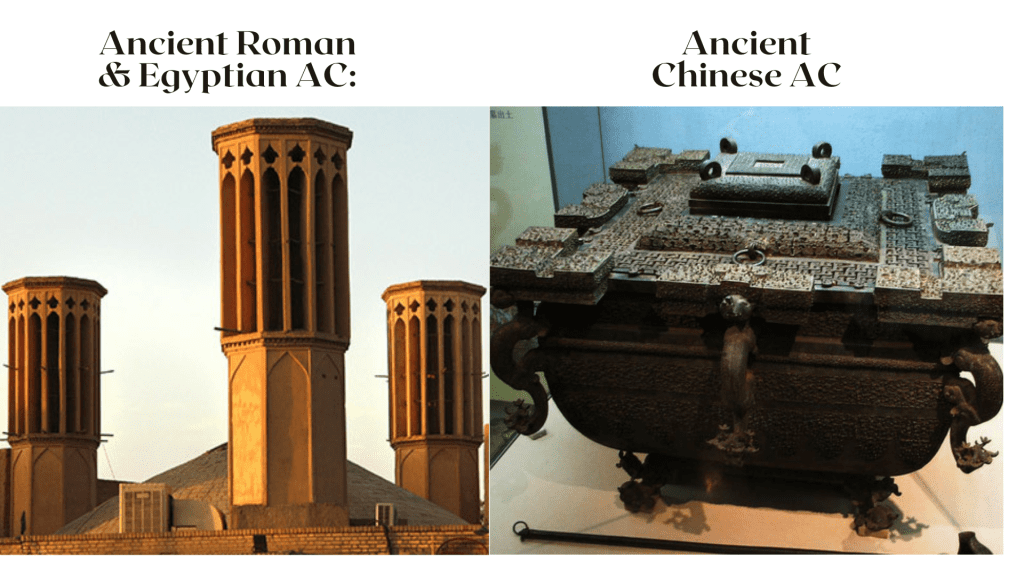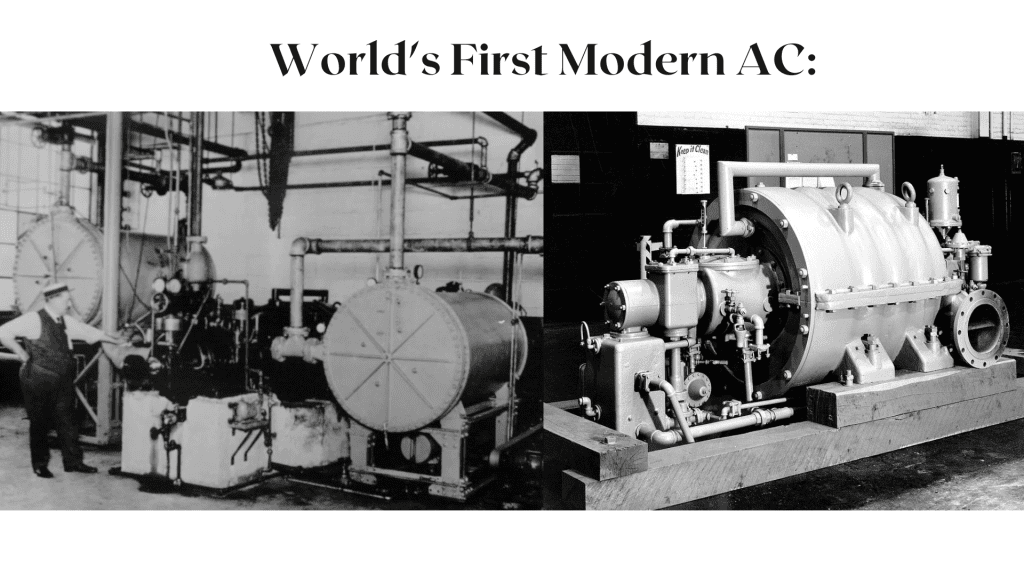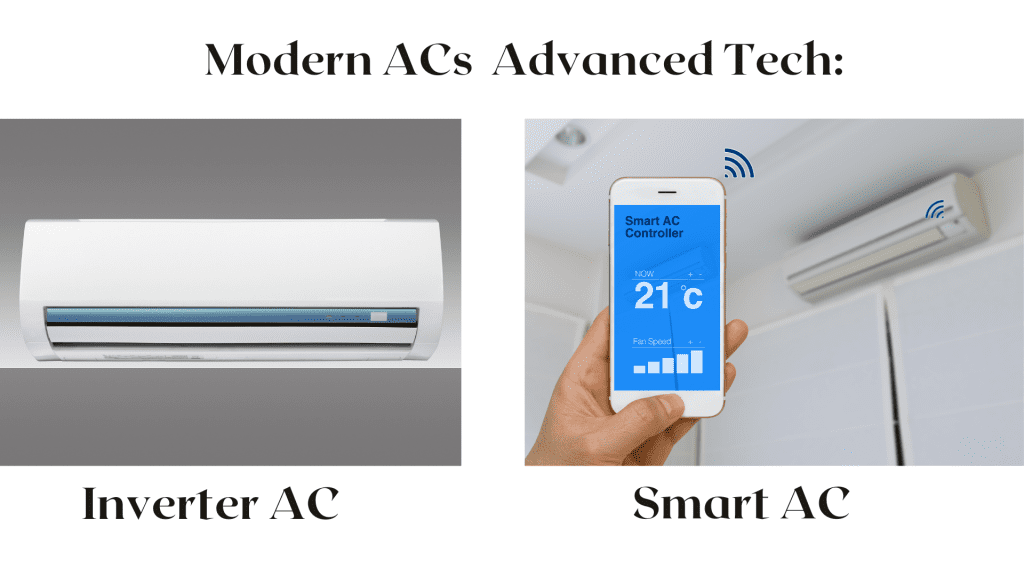Air conditioners are marvels of discovery and invention that billions of people turn to during summer, when temperatures and humidity soar. These marvels enable homeowners to activate it easily flipping a switch. They are intricate electromechanical systems–the culmination of nearly a century of engineering development in cooling, thermodynamics, controls, and energy efficiency. As a matter of fact, a survey of ASME members in 2000 voted Air Conditioners among the ten greatest mechanical engineering achievements of the 20th century. But do you know how was this marvelous piece of tech born? How it evolved over the course of time? And how people used to perform air conditioning before the ACs gained prominence? Stick to this blog and you will learn everything you need to about the evolution of AC.
Origin of AC:
In ancient times, people used water to accomplish the process of air cooling. Ancient people would hang wet linen or reeds on the walls of their homes, and as the air passed through them, it would be cooled. This method of air conditioning was also used in the ancient Egyptian temples and palaces, where it was believed to create a more pleasant atmosphere. Ancient Greeks & Romans also used the same method to perform air conditioning.
Ancient Chinese royalty used a different method. They would hang a large piece of silk in their palace and pour a mixture of salt water and sulfur on it. This mixture would evaporate, cooling the air in the palace. This method was also prevalent in India during the 5th century BC.


Evolution of AC: Earliest AC Concepts:
The oldest known air conditioning system was invented in the 1st century AD by the Roman engineer and architect, Vitruvius. He designed a system of ducts & channels that circulated cool water from building’s basement to its upper floors. This system was used in the Roman Emperor’s palace.
In the 17th century, John Evelyn laid the foundation for the first modern air conditioner by inventing an AC. He designed a machine that used a large fan to blow air over a large bowl of ice. This cooled the air and allowed for more comfortable temperatures in the summer.


Also Read: 7 Surprising AC Health Benefits for Old People to learn 7 AC Health Benefits for Old People.
Evolution of AC: Modern AC’s Emergence:
Haviland Carrier, however, boosted the evolution of AC in 1902, when he invented the first air conditioner in order to solve a printing plant application problem in New York, while experimenting with humidity control laws. Using mechanical refrigeration concepts established earlier, Carrier’s system circulated cool air through coils filled with water, controlling humidity levels simultaneously.
In 1933, Carrier Air Conditioning Company of America came up with a belt-driven condensing unit & blower in 1933. Moreover, addition of mechanical controls and evaporator coil, accelerated the evolution of AC. With its top-of-the-line central air conditioner, the Infinity, Carrier became the model of the growing market for air-cooling systems. It features advanced components including a two-stage scroll compressor for quieter, more energy-efficient operation than the founder’s early models.


Evolution of AC: Advancement in Modern ACs:
The advancement of modern AC technology has been nothing short of remarkable. From the introduction of inverter ACs to the recent development of smart energy-saving ACs, the AC market has seen a massive transformation in recent years. Inverter ACs are among the most popular types of ACs on the market today. These ACs use an inverter to automatically adjust the speed of the compressor to match the desired cooling power. This allows the AC to use less energy, resulting in significant cost savings for consumers.
In addition to inverter ACs, there has been a significant rise in the development of Smart ACs. Smart ACs automatically adjust their settings to save energy and money for the user. For instance, some models are able to detect when a room is unoccupied and will adjust the temperature accordingly, resulting in significant energy savings. Furthermore, you can manage & monitor your Smart AC remotely via a smartphone app or voice-controlled assistant, allowing users to adjust their AC’s Settings from anywhere.
Conclusion:
Our homes & workplaces are surrounded by modern ACs today, but it’s important to remember that its origins date back centuries. During times when heat and humidity levels could be unbearable, ancient air conditioners provided a much-needed service. It doesn’t matter if we don’t use the same methods as our ancestors, we should be thankful to them for their contribution during the evolution of AC. And more importantly, we should ensure that we keep our AC in optimal condition by availing regular AC Check-ups & AC Services.



